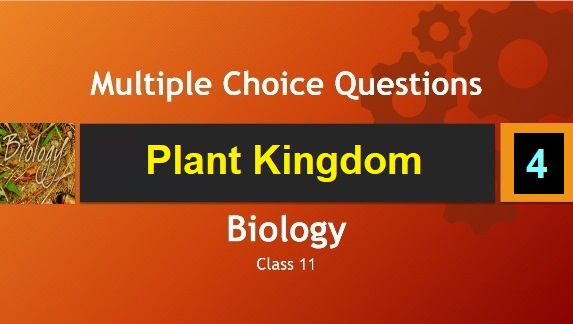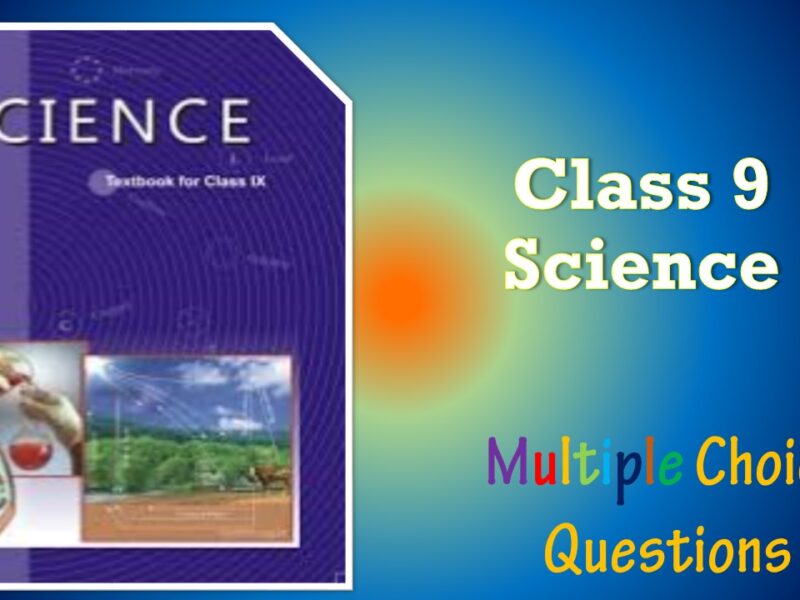CBSE Class 11 Chemistry Chapter 3 Biology Plant Kingdom Multiple Choice Questions with Answers. MCQ Questions Class 11 Biology Plant Kingdom with Answers was Prepared Based on Latest Exam Pattern. Students can solve NCERT Class 11 Biology Plant Kingdom MCQs with Answers to know their preparation level.
Students who are searching for NCERT MCQ Questions for Class 11 Biology Plant Kingdom with Answers are compiled here to get good practice on all fundamentals. Know your preparation level on MCQ Questions for Class 11 Biology with Answers. You can also verify your answers from our provided MCQ Class 11 Biology Plant Kingdom with Answers. So, ace up your preparation with MCQ of Chapter 3 Biology Objective Questions.
MCQ Questions Class 11 Biology Plant Kingdom with Answers - Set - 4
Question 1:
Question. Which one of the following is common to multicellular fungi, filamentous algae and protonema of mosses?
(a) Diplontic life cycle
(b) Members of Kingdom Plantae
(c) Mode of nutrition
(d) Multiplication by fragmentation
Correct Answer – (D)
Question 2 :
Question. Turpentine is got from
(a) angiospermous wood
(b) bryophytes
(c) gymnospermous wood
(d) ferns.
Correct Answer – (C)
Question 3 :
Question. Which one of the following is heterosporous?
(a) Adiantum
(b) Equisetum
(c) Dryopteris
(d) Salvinia
Correct Answer – (D)
Question 4 :
Question. Ulothrix can be described as a
(a) filamentous alga lacking flagellated reproductive stages
(b) membranous alga producing zoospores
(c) filamentous alga with flagellated reproductive stages
(d) non-motile colonial alga lacking zoospores.
Correct Answer – (C)
Question 5 :
Question. Which of the following plants produces seeds but not flowers?
(a) Maize
(b) Mint
(c) Peepal
(d) Pinus
Correct Answer – (D)
MCQ Questions Class 11 Biology Plant Kingdom with Answers
Question 6 :
Question. Which one is a wrong statement?
(a) Haploid endosperm is typical feature of Gymnosperms.
(b) Brown algae have chlorophyll a and c and fucoxanthin.
(c) Archegonia are found in Bryophyta, Pteridophyta and Gymnosperms.
(d) Mucor has biflagellate zoospores.
Correct Answer – (D)
Question 7 :
Question. If the cells of root in wheat plant have 42 chromosomes, then the no. of chromosome in the cell of pollen grain is
(a) 14
(b) 21
(c) 28
(d) 42
Correct Answer – (B)
Question 8 :
Question. The product of conjugation in Spirogyra or fertilization of Chlamydomonas is
(a) zygospore
(b) zoospore
(c) oospore
(d) carpospore.
Correct Answer – (A)
Question 9 :
Question. In Pinus, the pollen grain has 6 chromosomes then in its endosperm will have
(a) 12
(b) 18
(c) 6
(d) 24.
Correct Answer – (C)
Question 10 :
Question. Isogamous condition with non-flagellated gametes is found in
(a) Volvox
(b) Fucus
(c) Chlamydomonas
(d) Spirogyra.
Correct Answer – (D)
- NCERT Solutions Class 11 Chemistry Chapter 1 : Some Basic Concepts of Chemistry
- NCERT Solutions Class 11 Chemistry Chapter 2 : Structure Of The Atom
- NCERT Solutions Class 11 Chemistry Chapter 3 : Classification of Elements and Periodicity in Properties
- NCERT Solutions Class 11 Chemistry Chapter 4 : Chemical Bonding and Molecular Structure
- NCERT Solutions Class 11 Chemistry Chapter 5 : States of Matter
- NCERT Solutions Class 11 Chemistry Chapter 6 : Thermodynamics
- NCERT Solutions Class 11 Chemistry Chapter 7 : Equilibrium
- NCERT Solutions Class 11 Chemistry Chapter 8 : Redox Reactions
- NCERT Solutions Class 11 Chemistry Chapter 9 : Hydrogen
- NCERT Solutions Class 11 Chemistry Chapter 10 : The s-Block Elements
- NCERT Solutions Class 11 Chemistry Chapter 11 : The p-Block Elements
- NCERT Solutions Class 11 Chemistry Chapter 12 : Organic Chemistry: Some Basic Principles and Techniques
- NCERT Solutions Class 11 Chemistry Chapter 13 : Hydrocarbons
- NCERT Solutions Class 11 Chemistry Chapter 14 : Environmental Chemistry




